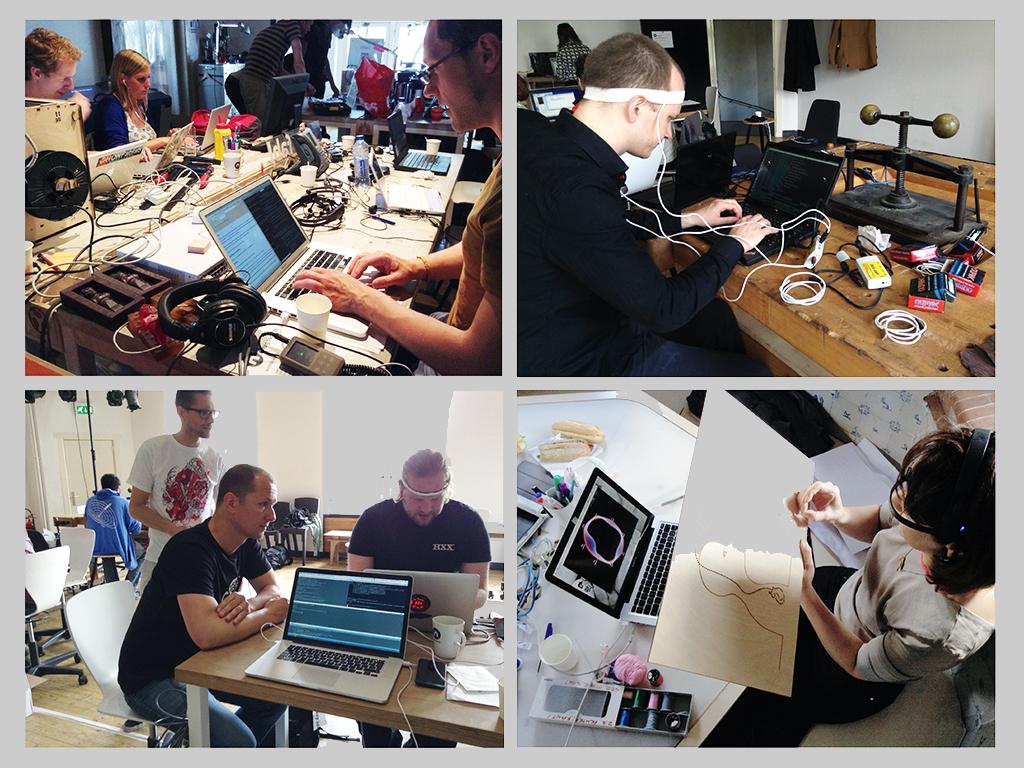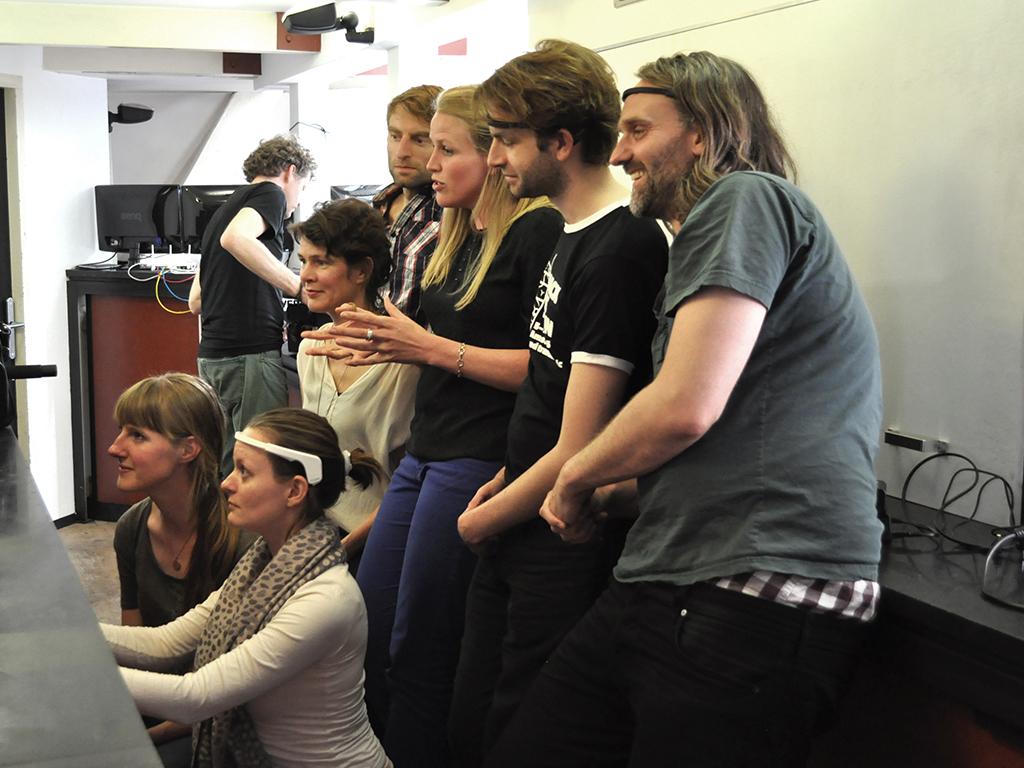After intense months of waiting and preparation for the event, finally, the transdisciplinary hackathon Hack the Brain has taken place at Waag, closely with the Open Wetlab, the biotechnology lab of art and design. The event has involved different people, including scientists, programmers, artists and creatives, which together, during an intense co-working of three days, have operatively experimented and reflected upon the possibilities offered by the new Brain Computer Interface (BCI).
The workshop had metaphorically the goal to "open" the brain, in order to try understanding what could be the future applications related to this field of research. Many ideas and suggestions have arisen from this intense hackathon and there were many debates about this fascinating topic. We could use different types of BCI hardware: from the MindWave with only two channels of Neurosky, to the Interaxon Muse with four, to the Emotiv EPOC with 14 channels, to other more complex systems, such as the TMSI Mobita, also used in medical equipments.
In addition to the numerous hardware made available, a scientific expert panel has supported the various working groups in order to improve the data analysis. The atmosphere was exciting and very engaging, and all the participants in different ways have contributed to the debates and the construction of new creative applications able to encode the brain activity in some way.
Various working groups have investigated the interaction between the computer and their emotions and how these could be shared and recorded in some way, by connecting the BCI with other electronic devices, such as mobile phones or google glass. Other teams have been working, instead, on how the BCI could be used for curative treatments, by inducing relaxation or lucid dreams that might be therapeutic to humans. Some projects have also focused on the possibility of connecting more brains, putting them in synchrony with each other, in order to obtain a sort of first empathic neuronal connection.
Among the proposed concepts, some young programmers even managed to achieve a total disassembling of sensors, wearable hardware, and data analysis software, by creating a first BCI system which is opensource and opendata, directly developable by each user for free.
As a designer, my concept concerned the possibility of transforming the neuronal emotions registered by the BCI in physical wearable artifacts, 3D printed. What interested me most was the possibility of the mind, through the use of the BCI, to modify the matter and manipulate the shapes directly by thought. In fact, this topic, halfway between digital manufacturing and bio-interfaces, is the subject I am investigating during my research at the Open Wetlab, in collaboration with the International Doctorate in Design and Innovation of the Second University of Naples.
As a next premonition, at the TED conference of the 2014, Kurzweil said, "our thinking will be a hybrid of biological and non-biological thinking" and it's exciting that the hackathon headed exactly in this direction. Among the various speeches, in particular, aroused a lively debate on a neuromarketing's project which involved the use of fMRI Brain Scanning in order to discover "secret" information or consciously concealed information from the subjects analyzed, using them for commercial purposes. The ethical debate is still open and there are different opinions about it.
Actually, as humans, you have to wonder what are the ethical boundaries of biohacking research? And also, what are the differences between research that’s ethically useful for mankind, and another that expresses just the will of domination over man and the secrets of his nature? For now, we are still in an embryonic state, especially regarding the reliability of many of the creative applications tested. This is because the neuronal signals are still difficult to decode and rework in a defined way. Certainly the future will give us many surprises, and among these, most probably, the effective implementation of various applications presented at the hackathon.
However, what it is necessary to investigate is not only the practice of biohacking in itself, but rather we need to reflect on how and why the biohacking can be used. Therefore, the only purpose of "opening" the brain, is not the most interesting goal to reach. In my view, one of the most interesting things to investigate, is understanding how these new biohacking practices can lead us to a better future, respectful of mankind and nature that characterizes it.


